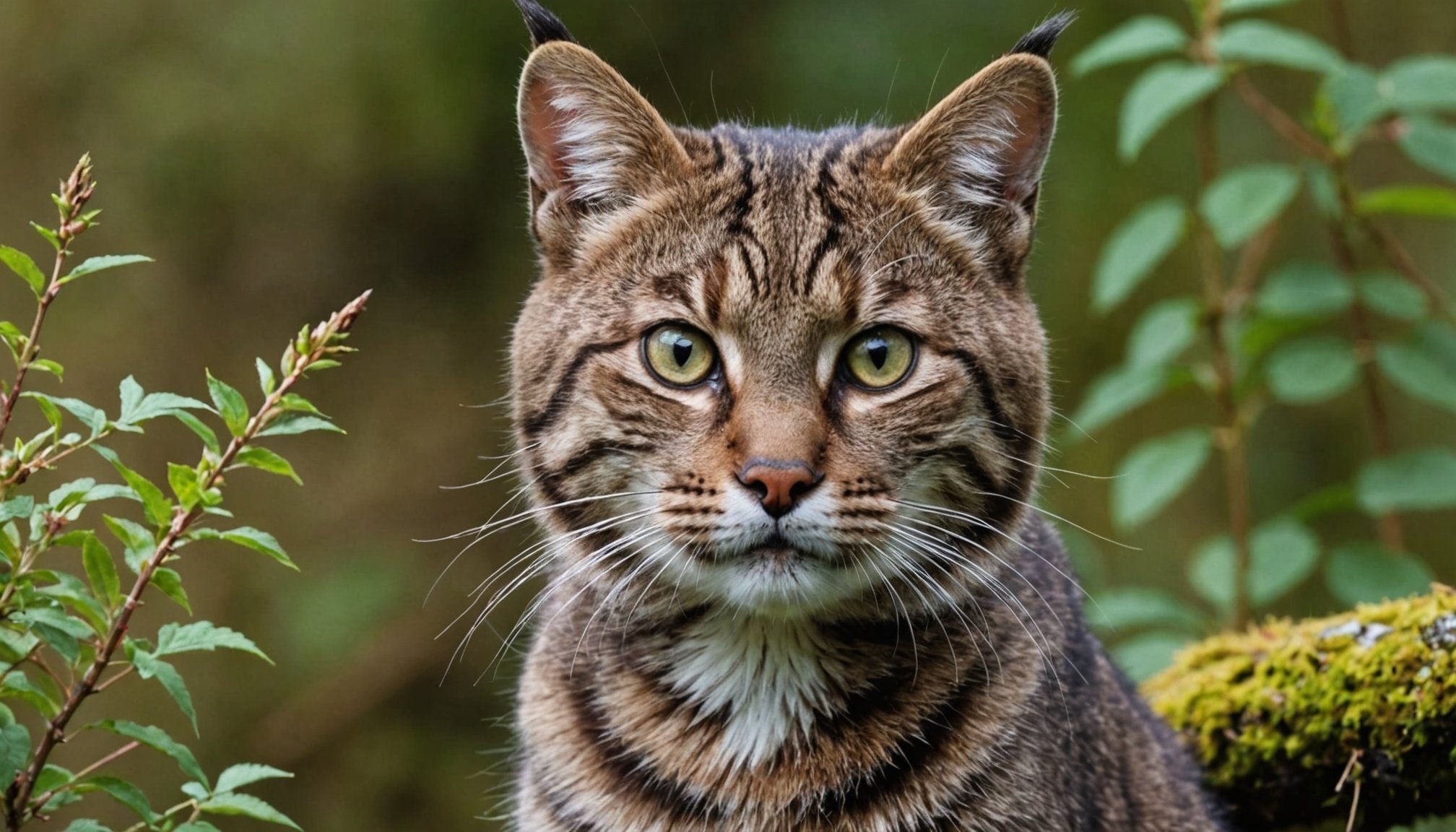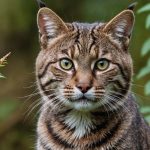Overview of the Scottish Wildcat Population
The endangered Scottish wildcats are facing a critical survival crisis. Current population estimates suggest there are fewer than 300 individuals remaining in the wild. This alarming decline highlights the urgent need for conservation efforts. Historically, Scottish wildcats thrived in the dense forests of the Scottish Highlands, playing a vital role in maintaining the ecological balance by controlling small mammal populations.
Over the centuries, the population status of these iconic felines has been severely affected by several factors. Loss of habitat due to deforestation and agricultural expansion has significantly contributed to their decline. Additionally, hybridisation with domestic cats poses a grave threat, as it dilutes the genetic purity of the species and blurs the distinction between wild and domestic felines.
A découvrir également : Identifying Boredom in Pet Birds: Signs to Watch For and Proven Solutions to Keep Them Engaged
The conservation significance of preserving Scottish wildcats cannot be understated. They are not only a symbol of Scotland’s natural heritage but are also critical to the ecosystem. Without them, there would be a significant impact on prey populations, potentially leading to cascading ecological effects. Conservation organisations are actively working to secure habitats, manage threats, and undertake breeding programs to bolster wildcat numbers and ensure their continued presence in Scotland’s wilderness.
Habitat Loss and Degradation
Wildcats, resilient but vulnerable creatures, find their existence deeply intertwined with various habitat types. From dense jungles to arid deserts, these habitats provide crucial resources like food, shelter, and breeding grounds essential for their survival. However, these habitats are facing multiple environmental challenges, primarily due to human activities.
En parallèle : How to Successfully Introduce a New Cat to Your Dog: Proven Strategies for a Smooth Transition
Urbanization, a major driver of these changes, has led to significant habitat loss. As cities and agricultural landscapes expand, the natural environments that wildcats depend on shrink or degrade. This land-use change disrupts ecosystems, fragments habitats, and limits the availability of vital resources for wildcats.
Statistically, habitat loss has been alarming over the past decades. Numerous studies highlight that nearly 40% of critical wildcat habitats have been altered or entirely lost due to urban encroachments and other anthropogenic activities. This reduction increases competition among remaining wildlife for diminishing resources, pushing many species toward the brink of extinction.
In facing these environmental challenges, it is imperative to implement conservation strategies aimed at preserving and restoring critical habitats. This includes creating protected areas, promoting sustainable development, and raising awareness about the impacts of habitat loss on wildcat populations. Leveraging these strategies could mitigate the adverse effects and offer hope for the future of wildcats and their ecosystems.
Hybridization with Domestic Cats
Hybridization refers to the interbreeding between wildcats and domestic cats, leading to offspring that possess a mix of both species’ characteristics. This genetic blending poses a threat to the genetic integrity of wildcat populations, potentially eroding their unique traits essential for survival in their natural habitats. Unlike wildcats, which are elusive and generally wary in their interactions with humans, domestic cats demonstrate more docile behaviours shaped by years of living closely with people. Genetically, domestic cats tend to lack the adaptations necessary for thriving in the wild, pushing the offsprings towards domestication traits.
Wildcats face substantial challenges in preserving their genetic purity due to these hybridization trends. To combat this, various conservation initiatives are in action globally. These efforts include monitoring wildcat territories to identify and restrict entry points of non-wildcats, thereby reducing opportunities for hybridization. Additionally, some organisations have launched public awareness campaigns focusing on the impact of free-roaming domestic cats on wildlife. Potential solutions, such as proposing regulations on domestic cat movement in ecologically sensitive areas, are being considered to safeguard wildcats’ genetic integrity. By understanding the dynamics of hybridization, these measures aim to protect the vital attributes that define wildcats and maintain the balance in ecosystems.
Diseases Threatening Wildcat Populations
Wildcats face significant challenges from various diseases that threaten their survival. These health threats include feline immunodeficiency virus (FIV), feline leukemia virus (FeLV), and the particularly devastating feline panleukopenia. These diseases can lead to severe population declines by causing illness and reducing reproductive success among wildcats.
One major issue is the transmission of diseases from domestic cats to wild populations. With increasing human encroachment, interactions between domestic and wildcat populations are more frequent. This interaction facilitates the spread of pathogens such as feline panleukopenia, a highly contagious viral disease that leads to high mortality rates, especially in kittens.
Preventative measures are crucial in addressing these health threats. Efforts include vaccination programs for both wild and domestic cats to reduce the risk of transmission. Health monitoring initiatives are also essential. Continuous surveillance helps identify outbreaks early and allows for timely intervention to prevent disease spread.
Moreover, conservationists advocate for maintaining robust habitats to support healthier wildcat populations, thereby increasing their resilience against disease. By implementing these strategies, we can better protect wildcat populations from the ever-present threat of diseases and ensure their continued survival in the wild.
Conservation Efforts and Legislative Challenges
Efforts to protect wildlife, particularly wildcats, involve a combination of conservation strategies and robust legal frameworks. Current programs aim to safeguard habitats and manage biodiversity to ensure long-term sustainability. Programs such as wildlife corridors and protected areas facilitate healthy ecosystems, vital for wildcat survival.
Legislation plays a crucial role in preserving these majestic animals. Laws regulate hunting practices and prevent illegal trade. Wildlife protection acts, enacted globally, set the groundwork for preserving habitats and species at risk.
Success stories exist, illustrating that these conservation measures can be effective. A notable example is the comeback of certain wildcat populations through breeding programs and habitat preservation initiatives. However, despite these achievements, significant challenges remain in enforcement. Many regions struggle with inadequate funding and limited resources, impairing the ability to implement laws effectively.
Moreover, cross-border cooperation is necessary to prevent trafficking and habitat degradation, as wildcats often roam expansive territories. Strengthening international agreements and raising awareness remain essential to addressing these issues comprehensively. With continued focus and adaptation of legal frameworks to new challenges, the journey toward successful conservation will remain progressive and optimistic.
Community Engagement and Awareness
Effective community involvement is pivotal for successful conservation efforts. When local communities rally behind conservation projects, the impact is exponential. First, the crucial role of public awareness in fostering support cannot be overstated. Educating people about environmental issues, specifically those affecting wildcats, is integral to gaining the community’s backing.
Communities everywhere have taken strides to champion conservation causes. Various initiatives aim to raise awareness about the unique challenges wildcats face, like habitat loss and poaching. Informative workshops, local events, and engaging educational programmes are some methods used to foster understanding and commitment among residents.
Case studies serve as a testament to the power of such efforts. For instance, a community in Africa successfully protected a declining wildcat population by implementing educational campaigns. They effectively sensitised their populace to environmental concerns, which in turn, bolstered local support and reduced threats to the wildcats.
Education and awareness campaigns enable communities to actively participate in conservation efforts. Their contribution manifests in tangible actions like habitat restoration and the establishment of monitoring teams, ensuring a thriving environment for wildlife. By involving communities, conservation initiatives gain sustainable strength, turning distant objectives into shared, actionable goals.
Potential Solutions and Future Directions
In the quest to preserve the Scottish wildcat, conservationists are exploring innovative approaches to habitat restoration. Reforestation and the creation of wildlife corridors are being implemented to reconnect fragmented territories. This not only aids in the preservation of the habitat but also promotes genetic diversity among the wildcats. Such efforts are crucial in providing the environment these majestic felines require to thrive.
Collaboration between non-governmental organizations (NGOs), government, and local communities is pivotal. These partnerships ensure a holistic approach to conservation solutions, where everyone has a stake in the wildcats’ future. By engaging local communities in conservation efforts, there’s an increase in awareness, and support, and a tangible connection between community well-being and conservation success.
Looking forward, the vision for the future of wildcats is rooted in safeguarding their natural habitats while enhancing public awareness and involvement. Action steps may include increasing protected areas, strict enforcement of anti-poaching laws, and continued research into the species’ needs. The overarching aim is not only to stabilize the existing population but to ensure a sustained and thriving future for the Scottish wildcat population. This calls for continuous adaptation and engagement to address emerging challenges.











